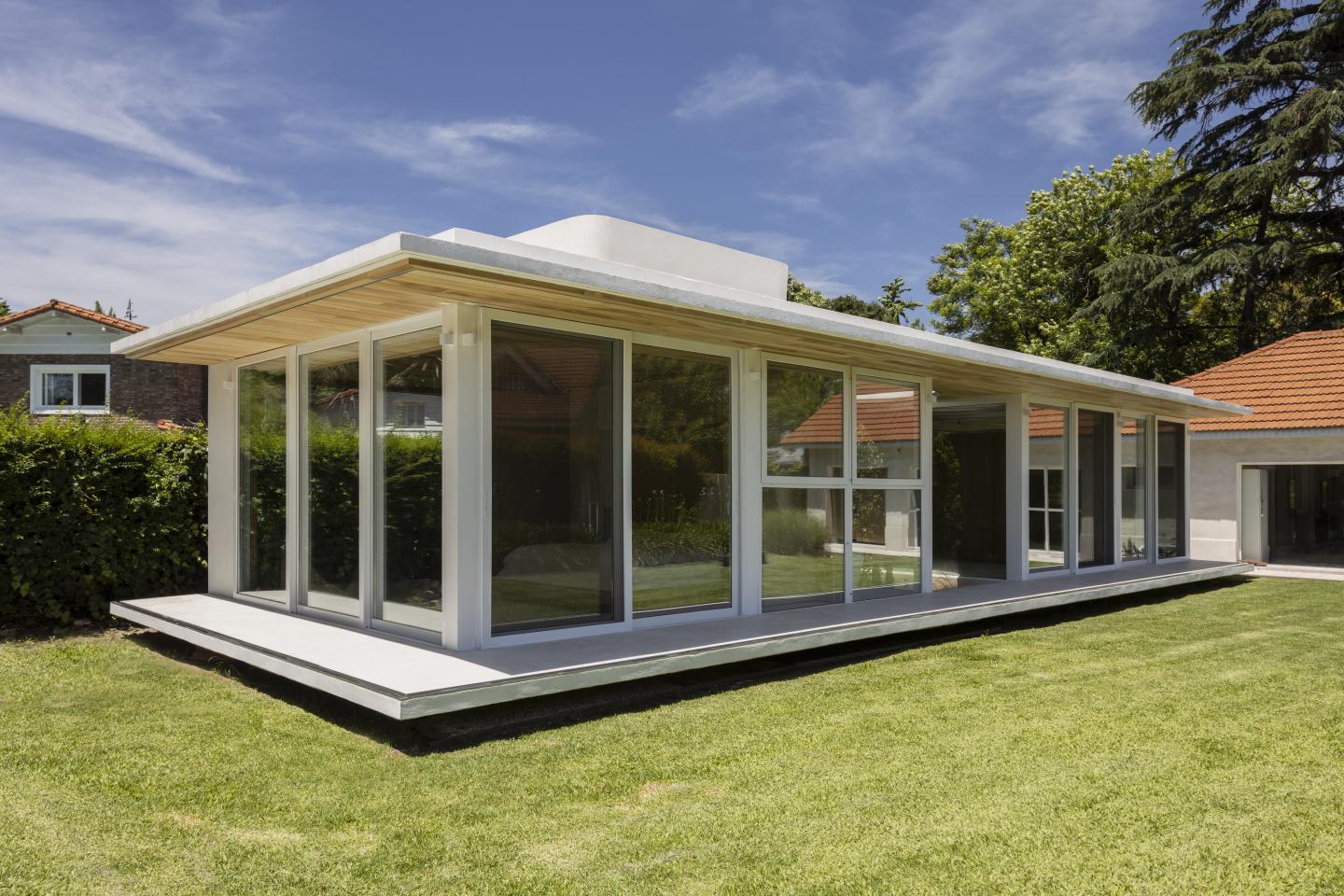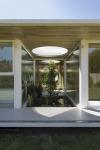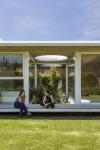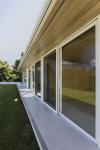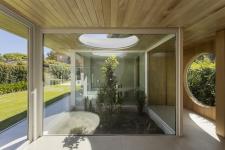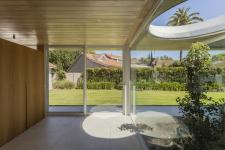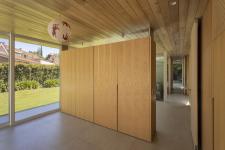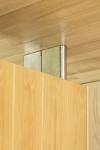The design process for this house was carried out hand in hand with the clients. In the initial meetings, it was decided to prioritize a qualitative program over a quantitative one, emphasizing air, void, light, space, and views rather than focusing on the distribution of uses and the classification of the program. The house relates to an existing construction in an almost imperceptible way, highlighting the contrast and connecting through voids of air.
Air has no defined volume, is sensitive to temperature, and is both transparent and colorless. This concept served as the catalyst for an architecture that directly engages with the exterior, creating a continuous inside-out relationship that blurs the boundaries of the built environment. Air circulates and flows through the house, cooling the interiors and enabling cross-ventilation.
To divide the interior spaces, walls were avoided. Instead, furniture acts as a temporary boundary for the surfaces, creating maximum flexibility that adapts over time and according to the users’ needs. The courtyard serves as a link between the public and private areas of the house. There is no single main entrance; instead, multiple access points are connected by a semi-covered gallery. At each of these points, the clear views extend to a backdrop of oak wood, emphasizing the only boundary toward the neighboring property line.
Two horizontal planes supported by 12 metal columns and floor-to-ceiling windows define the container. An overhang and a series of metal sunshades filter the intense sunlight, creating a dynamic rhythm on the facade. The accessible green roof further contributes to this function, recovering the absorbent ground previously occupied. The predominant materials are iron, concrete and glass, while wood is used in a timeless and indeterminate way.
At night, the house transforms into a large beacon. Indirect lighting through perimeter recesses, combined with home automation for light regulation, provides exceptional spatial and visual comfort. Both natural and artificial light generate fluid, sensitive, and boundaryless spaces.
2023
2024
City: San Isidro, Buenos Aires, Argentina
Area: 75 m2 – 800 ft2
Architects: Arq. Barbara Cosentino, Arq. Nicolas Bozzano, Arq. Leonardo Aguirre
Project Team: Arq. Luigi Palavecino, Bruno Mutti, Arq. Victoria Herrera
Photographs: Albano Garcia
Structural Calculation: Ing. Hernán Martinetti
Construction Company: Arq. Sebastián Areitio – Arq. Matías Zona
Lighting Design: Cappiello & Partners
